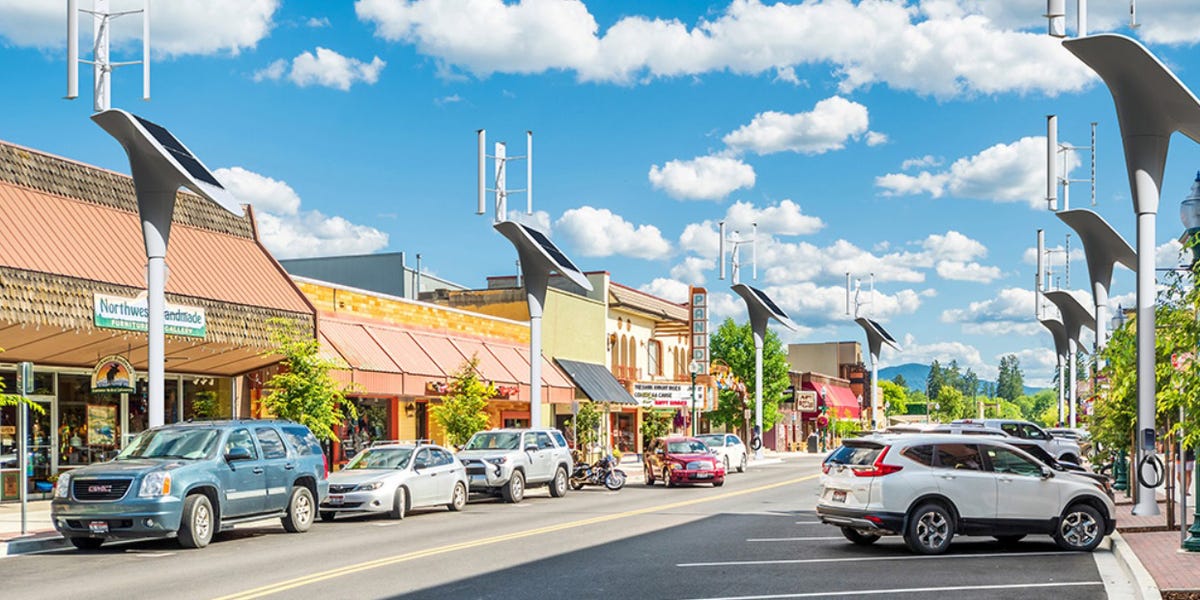
CAN THIS TYPE OF ELECTRIC VEHICLE CHARGER GO MAINSTREAM?
- Beam Global rolls out new type of curbside charger, which generates solar and wind power, and also provides utility-generated power to parked EVs, and also provides street light at night.
- The chargers use existing grid connections of street lights, which they replace, bypassing the need for new construction and grid connections.
- The BeamSpot features its own battery, as do the company's other solar chargers, which allows them to collect energy and then provide it to EVs.
By now we've seen plenty of pole-mounted curbside chargers that use existing electric connections, and we've seen solar-powered chargers that gather and store energy, independent from the grid.
A new type of charger developed by Beam Global combines the two concepts, while also taking on the role of traditional streetlights.
Dubbed BeamSpot, this type of charger combines solar, wind, and utility-generated energy into a charger with its own energy storage meant to replace existing streetlights, while still using some of their existing electrical connection and foundation.
In addition to a solar canopy, the charger uses a battery to store the provided and generated energy, and is able to dish it out to EVs parked below.
The concept is meant to address the growing issue of urban charging shortages, including for city dwellers who might not otherwise have a set overnight parking spot with a charger.
"Areas with the most EVs often face significant challenges in deploying infrastructure and managing increased electricity demand," said Desmond Wheatley, CEO of Beam Global. "Traditional charging infrastructure can be costly and disruptive to install, often requiring significant modifications to existing public spaces."
One of the advantages of BeamSpot is that it doesn't require entirely new pole installation, which entails costly and time-consuming permitting, trenching, and easements, instead replacing the existing pole mounting.
Of course, there are a couple of disadvantages, which you've no doubt guessed by now. These units won't provide DC fast charging speeds, and there are some real costs involved even when compared to other converted streetlight charger concepts due to the battery and solar panels required.
So these won't be particularly price-competitive with the cheapest 240-volt Level II chargers that merely hook into existing lighting infrastructure and take a couple of hours to install with a drill and some clamps, relying on utility-provided electricity. This could make them less attractive to cities looking to maximize the number of charging spots via the least expensive hardware.
The advantages include renewable energy generation which won't place a strain on the grid even if dozens of EVs are all charging on just a handful of streets downtown. In the event of a natural disaster, these types of chargers would also be able to juice up EVs when local utility power is out for days.
As a long-term solution for cities that get plenty of sunlight, or perhaps too much sunlight, this technology could be a good fit for certain charging deserts that already use grid-independent solar chargers.
We are certainly thinking of cities and towns in the American southwest where solar energy opportunities are abundant, and where the volume of traffic in an area and electricity costs might well favor locally generated power.
"We believe our BeamSpot product line will solve real problems both in America and in Europe: expanding access to charging where people need it most, at the curb on the street and in parking lots," Wheatley said.
Will chargers of this type become commonplace in parts of the US in coming years, or is this concept ultimately too hardware intensive? Let us know what you think in the comments below.
Looking to purchase a car? Find your match on the MSN Autos Marketplace 2024-09-13T14:57:58Z dg43tfdfdgfd